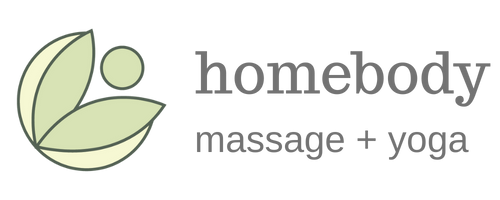Rest and Digest: The Parasympathetic Nervous System
Sometimes us health and wellness professionals will throw out jargon that you may or may not have heard before. It may be in the midst of our session and it slipped your mind to ask later, likely due to that lovely state called “massage brain”. Regardless, as health and wellness professionals, it’s also our duty to educate. So here we are! This will be a bit sciency at times, but I’ll make an effort to keep it in plain language.
Note: this will not be a thorough breakdown of The Nervous System, that’s a whole other book. But this broad overview of the parasympathetic nervous system, and its relation to massage, does require some upfront info. Also, I’ll use “NS” at times as a way to abbreviate “nervous system”. Okay, let’s dive in.
First, the parasympathetic nervous system is a branch of the autonomic nervous system. The autonomic NS is a division of the nervous system which regulates bodily functions unconsciously and involuntarily. Think of heart rate, digestion, the stress response, respiratory rate (stick a pin in that), and reflex actions such as coughing, sneezing, and so on. The autonomic NS is made up of two branches that operate in opposition to each other, the sympathetic NS and the parasympathetic NS.
The sympathetic NS, simply put, can be described as the “flight or fight response” branch. When stress mounts, the sympathetic nervous system goes into action. Our heart rate increases, blood pressure rises, and stress hormones such as adrenaline and cortisol are pumped into the veins. This survival tactic works great when faced with a potentially life-threatening scenario, kicking us into high gear to get through the danger. However, that system tends to be overactive. Here’s why. The sympathetic nervous system isn’t active just for high pressure moments. The sympathetic nervous system is active during a stressful news broadcast, when “doomscrolling”, when life’s ups and downs have you concerned or anxious. You could be having a massage and still have an active sympathetic nervous system!
Now, the parasympathetic side. The parasympathetic NS is oft described as the “rest and digest” branch of the autonomic nervous system. Characteristics of a stimulated parasympathetic nervous system include a lower heart rate, slowed breathing, the development of an environment built for digesting food, and the restoration plus conservation of energy. The parasympathetic NS facilitates the release of de-stress hormones such as oxytocin, prolactin, and vasopressin, allowing our brains to calm, process, and regenerate from stress responses. As important as the sympathetic nervous system’s fight or flight response is to handle stress, the parasympathetic is equally important in supporting our body and brain in its immune response, digestion, physical recuperation, and mental-emotional recovery.
Admittedly so, a lot of us struggle to relax, even in our leisure time. An object in motion tends to stay in motion, and I find that to be true both physically and mentally. Plenty of folks come in looking for relaxation massage, and that’s a good reason to see us! See, massage (when the pressure is right) activates the parasympathetic nervous system and helps us relax. Research has found that massage directly stimulates the parasympathetic nervous system via therapeutic touch. By receiving such touch, we feel the relaxation of muscles, our heart rate calm, and breathing slow down. That’s our body’s parasympathetic response priming us for true rest, digestion, immune support, and recovery. Which also means the stress and anxiety of a highly active sympathetic nervous system is reduced. Remember, the sympathetic and the parasympathetic work in opposition to each other. So, when the parasympathetic is active, the sympathetic is resting. A win-win.
The mentioning of slowed breathing reminds me, we stuck a pin in “respiratory rate” earlier. At Homebody, we stimulate the parasympathetic nervous system not only with massage but with the breath as well. We know how powerful the breath is. Meditation has a direct effect on inhibiting the sympathetic nervous system and activating the parasympathetic nervous system. Massage and breathwork? That’s a dynamic duo if you ask me.
Okay, but why is all this hoopla important? We believe in massage as a form of healthcare, and this is one way to share that. I think we can all agree that each of us need a healthy and true reprieve from the stressors of life. We all need a good night's sleep and healthy digestion to perform our best mentally, physically, emotionally, and spiritually. Massage and breathwork are two proven ways to stimulate the parasympathetic nervous system and improve health and wellbeing.
ps. If you haven’t read our blog post on the breath, check it out here! the breath — homebody massage + yoga.
date written: 4/1/2024
written by: Cody Quattrocci
